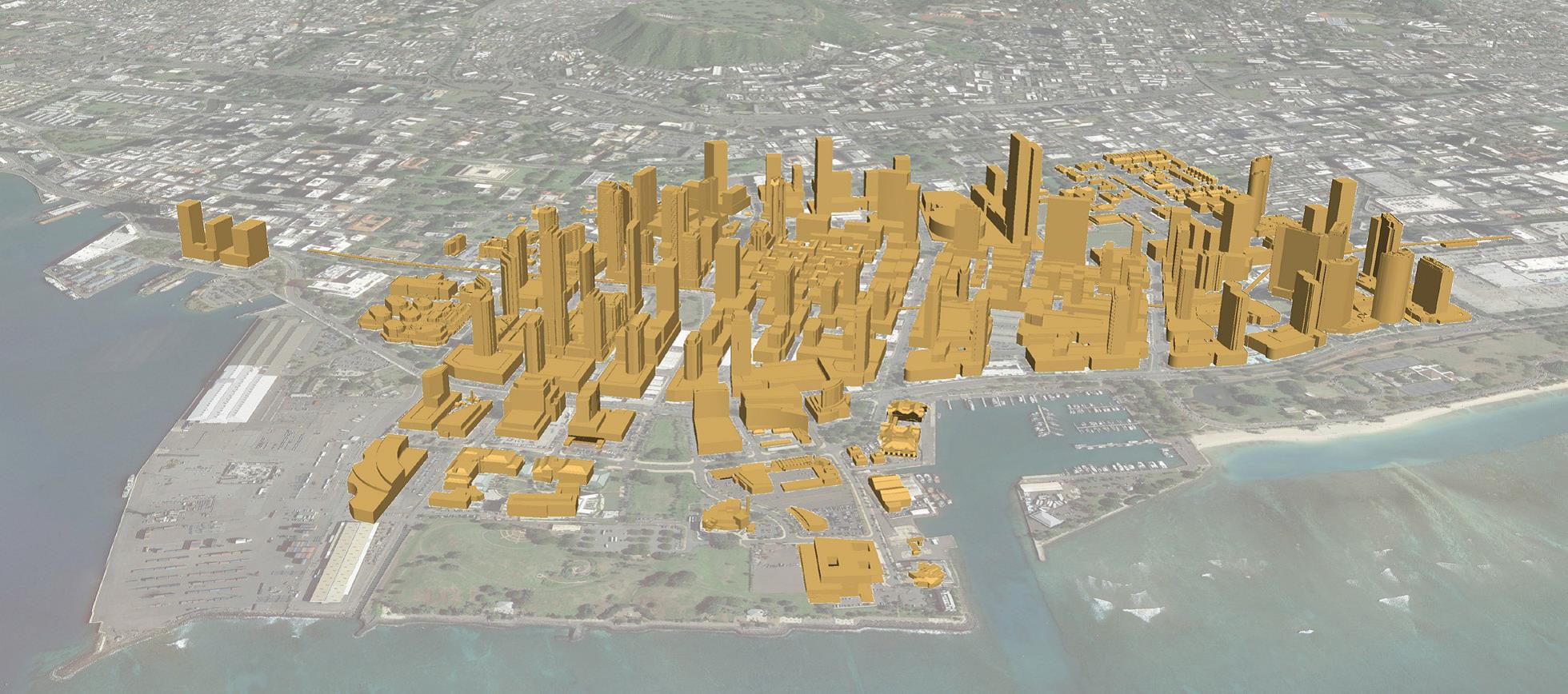As the City & County of Honolulu builds an elevated rail system from ‘Ewa to Ala Moana Center, the agencies charged with land use planning on O‘ahu are looking at development opportunities centered on each of the 21 rail stations.
What is TOD?
Known as “transit oriented development” or TOD, the station development area plans are intended to guide growth and development within an overall framework for land use and urban design. The planning efforts are being managed by two government land use agencies: the Department of Planning and Permitting (DPP) for the City & County of Honolulu, and the Hawai‘i Community Development Authority (HCDA) for Kaka‘ako lands controlled by the State of Hawai‘i.
The City describes TOD as “a pattern of different uses – housing, jobs and services – surrounding a transit station that takes advantage of the convenience and affordability of transit. A TOD neighborhood is vibrant, dynamic, and pedestrian- and bicycle-friendly. The City’s Neighborhood TOD Plans recommend more intense uses immediately adjacent to the stations, with progressively lower-density development spreading outward. TOD generally occurs within a radius of one-quarter mile from a transit stop, as this is considered to be a comfortable distance for pedestrians. TOD incorporates a high level of design to attract residents, visitors and workers.”
HCDA states that its TOD Overlay Plan “faces head-on the challenges of transit and land use integration – not only to prepare for the HART

How will TOD Affect Historic Resources?
The City’s TOD zoning overlay district specifically calls for plans, development and implementation actions to preserve individual and groupings of historic and cultural resources through the application of architectural and other design guidelines and standards for development; and also requires that TOD zones and implementing regulations include objectives addressing neighborhood character, unique community history, and protection of historic resources.
HCDA also refers to its enabling language established by the State Legislature, which declared that “sites of historical or cultural significance within the Mauka Area (of Kaka‘ako) shall be preserved.”
The Downtown TOD plan—which includes Iwilei, Chinatown and Downtown—includes specific goals and objectives to protect and preserve the scale, character, architecture and features of the Chinatown Historic District. The conceptual site plan and design for the Chinatown transit station were revised to avoid demolition of two adjacent historic buildings.
The City’s planning framework also emphasizes diverse neighborhoods, with a different mix of densities and building heights for each of the station areas, rather than a single formula for all of them. The City’s TOD Vision states, “each station area has its own unique identity, but they should all create a sense of place by celebrating historic and cultural assets…”
HCDA’s plan for Kaka‘ako includes design policies to “integrate the history, culture and character of Kaka‘ako” and encourages “adaptive re-use of character buildings.” These are described as “buildings of interest that highlight the ‘old Hawaii’ of early twentieth century architecture.” Strategies include tools and incentives for preservation and adaptive re-use.
Caution
Despite these planning, regulatory and design tools, there is still the threat that eventual development or redevelopment could demolish or diminish historic buildings or features.
Although the vision plans state that historic resources will be preserved, some zoning and development proposals fall short of that aspiration. The emphasis on density and height imposes regulatory and financial pressure on low-rise existing buildings. Without political will to turn back over-reaching development proposals—backed with regulatory authority and incentives—much of urban Honolulu’s historic architecture may be lost.
This is already apparent in the two 40-story condominium buildings, and their two 11-story parking structures, that are being constructed on the site of the historic News Building in Kaka‘ako. The City’s “Station Area Development Potential Report” for the transit project stated that the area around the Civic Center Station “has perhaps the greatest (development) potential of any station” and placed its development radius through the historic building.
HCDA’s development permit approvals followed suit, allowing the historic structure to be amputated, leaving only the Kapi‘olani street portion and demolishing the remainder, and HCDA even gave exemptions from other development rules to facilitate the building despite the harm to the historic property.
Recommendations
Historic Hawai‘i Foundation has consistently provided written and verbal comments and testimony on transit-oriented development plans and projects through all means available to it. Recent actions have included challenging HART’s implementation of its Programmatic Agreement related to TOD, submitting written comments on draft TOD plans, testifying at the Planning Commission about the plans, and testifying at HCDA about the development proposals.
The best type of redevelopment in a historic district is to use rehabilitation and adaptive use of existing structures. There are opportunities for hidden density by increasing use of currently vacant upper floors in existing building for housing, office, small-scale manufacturing or even retail. There are also a few underutilized lots or surface parking lots that could accommodate appropriately sized new development that would fit with the scale and character of the area. Maintaining, preserving and upgrading existing buildings would also utilize the existing fabric in a way that respects the heritage and character, and also is more affordable and less environmentally damaging than new construction.
For areas with a high concentration of historic and cultural resources, such as Chinatown and Downtown, additions or changes to the districts should use a light touch, polishing or investing in the existing urban fabric rather than trying to re-invent the entire area.
The best defense is for preservationists to insist that the development schemes follow appropriate preservation standards, and that the City and State be steadfast in applying their own laws to achieve the preservation goals and aspirations.


